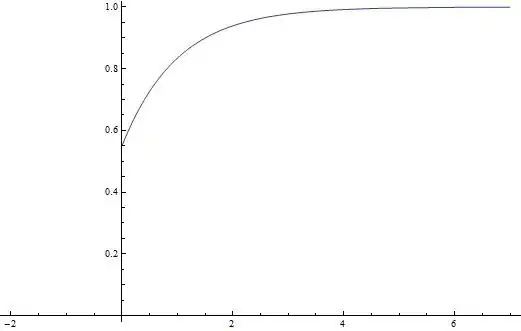Let $X$ be an exponential random variable $f(x) = c e^{-c x} \text{ if }x > 0; 0 \text{ otherwise.}$ Let $Z$ be a Bernoulli RV with $Pr(Z=1)=0.45$ and $Pr(Z=0)=0.55$.
$X$ and $Z$ are independent.
Let $Y$ be the product of $X$ and $Z$: $Y=XZ$. What's the distribution of $Y$?
Here's my attempt:
$Pr(Y\leqslant y)=Pr(XZ\leqslant y)=Pr(XZ\leqslant y \cap Z=1)+Pr(XZ\leqslant y \cap Z=0)$
Due to independence, the above equation becomes
$$ \begin{align} &Pr(XZ\leqslant y)Pr(Z=1)+ Pr(XZ\leqslant y)Pr(Z=0)\\ =&Pr(X\leqslant y)Pr(Z=1)+ Pr(0\leqslant y)Pr(Z=0)\\ =&0.45Pr(X\leqslant y)+0.55Pr(y\geqslant 0) \end{align} $$
Plug in $Pr(X\leqslant y)=F_X(y)$ and $Pr(y\geqslant 0)=1$:
$Pr(Y\leqslant y)=0.45(1-e^{-cy})+0.55=1-0.45e^{-cy}$
But this can't be right: it's not a valid cdf. What did I do wrong here? Thanks in advance!
Edit: it is a correct cdf. I had a brain freeze for a moment.
